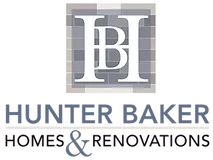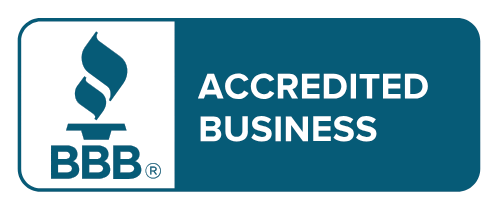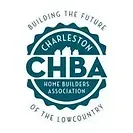Passive House Design: Charleston's Energy Revolution
Passive house design is revolutionizing how we build homes in Charleston, South Carolina. This innovative approach to construction focuses on creating highly energy-efficient buildings that maintain comfortable indoor temperatures year-round, without relying heavily on traditional heating and cooling systems.
Key Takeaways:
- Passive house design can reduce energy consumption by up to 90% compared to standard homes
- The airtight construction and superior insulation are core principles of passive house design
- Charleston's climate presents unique challenges and opportunities for passive house implementation
- Passive houses offer improved indoor air quality and thermal comfort
- While initial costs may be higher, long-term energy savings make passive houses a smart investment
- Local builders and architects are adapting passive house principles to suit Charleston's specific needs
What is Passive House Design?
Passive house design is a building standard that aims to create ultra-low-energy homes. It originated in Germany in the 1990s but has since gained popularity worldwide, including in Charleston. The main goal of passive house design is to maintain a comfortable indoor temperature using minimal energy input.
Core Principles of Passive House Design
The passive house approach relies on several key principles:
- Superinsulation: Homes are built with thick, high-performance insulation in walls, floors, and roofs.
- Airtight construction: Special attention is paid to sealing all potential air leaks.
- High-performance windows: Triple-paned windows are often used to minimize heat transfer.
- Thermal bridge-free design: Continuous insulation eliminates cold spots in the building envelope.
- Mechanical ventilation: A heat recovery ventilation system provides fresh air while retaining indoor heat.
These principles work together to create a home that requires very little energy to heat or cool, even in Charleston's hot and humid climate.
Passive House Design in Charleston's Climate
Charleston's subtropical climate, with its hot summers and mild winters, presents both challenges and opportunities for passive house design. The high humidity and occasional extreme weather events require careful consideration when implementing passive house principles.
Adapting to Charleston's Heat and Humidity
In Charleston, passive house designers focus on:
- Shading: Properly designed overhangs and external shading devices help keep the summer sun out.
- Moisture management: Careful detailing and material selection prevent moisture buildup in walls.
- Dehumidification: Specialized ventilation systems help control indoor humidity levels.
- Cool roof designs: Reflective roofing materials reduce heat gain during hot summer months.
By addressing these local climate factors, passive houses in Charleston can achieve remarkable energy efficiency while maintaining comfort year-round.
Benefits of Passive House Design for Charleston Homeowners
Passive house design offers numerous advantages for Charleston residents:
Energy Savings
The most obvious benefit is the dramatic reduction in energy use. Passive houses typically use 90% less energy for heating and cooling compared to standard homes. This translates to significantly lower utility bills for homeowners.
Improved Comfort
Passive houses maintain a consistent indoor temperature, eliminating cold spots and drafts. This means no more sweating through Charleston's sweltering summers or shivering during occasional cold snaps.
Better Indoor Air Quality
The controlled ventilation system in a passive house constantly supplies fresh, filtered air while removing stale air and pollutants. This is particularly beneficial in Charleston, where high humidity can lead to mold growth in traditional homes.
Durability and Resilience
The high-quality materials and careful construction techniques used in passive houses result in buildings that are more resistant to moisture damage, mold, and even extreme weather events like hurricanes.
Quiet Interiors
The thick insulation and high-performance windows that keep heat out also block external noise, creating a peaceful indoor environment even in the busy urban areas of Charleston.
Challenges of Implementing Passive House Design in Charleston
While passive house design offers many benefits, there are some challenges to implementing it in Charleston:
Higher Initial Costs
The specialized materials and meticulous construction required for passive houses can increase upfront building costs. However, these costs are often offset by long-term energy savings.
Limited Local Expertise
As passive house design is still relatively new to Charleston, finding experienced architects and builders can be challenging. However, this is changing as more professionals receive passive house training.
Adapting to Local Building Practices
Some passive house techniques may require adjustments to traditional Charleston building methods. This can lead to a learning curve for local contractors.
Balancing Historic Preservation
Charleston's rich architectural heritage means that passive house principles sometimes need to be creatively adapted to maintain the city's historic character.
Passive House vs. Traditional Construction: A Comparison
To better understand the differences between passive house design and traditional construction in Charleston, let's compare key aspects:

As the table shows, passive houses have significantly higher performance standards in key areas like insulation and air tightness, leading to much lower energy use.
Cost Considerations for Passive House Design in Charleston
While passive houses can cost more to build initially, it's important to consider the long-term financial benefits:

The higher upfront costs of a passive house are often recouped through energy savings within 7-10 years, after which the homeowner continues to benefit from lower operating costs.
Passive House Certification Process
For those interested in official recognition, there is a certification process for passive houses:
- Design phase: Work with a certified passive house designer
- Planning: Use passive house planning software to model energy performance
- Construction: Implement design with careful attention to detail
- Testing: Conduct a blower door test to verify airtightness
- Documentation: Submit all required paperwork
- Verification: A certifier reviews the documentation and test results
- Certification: If all criteria are met, the house receives passive house certification
While certification isn't necessary to benefit from passive house principles, it can assure quality and potentially increase property value.
Local Resources for Passive House Design in Charleston
For Charleston homeowners interested in passive house design, several local resources are available:
- The South Carolina chapter of the U.S. Green Building Council offers information and networking opportunities
- Clemson University's Architecture program includes passive house principles in its curriculum
- Local architecture firms specializing in sustainable design are increasingly offering passive house services
- The Charleston Homebuilders Association occasionally hosts workshops on advanced building techniques, including passive house design
These resources can help connect homeowners with knowledgeable professionals and provide education on passive house principles.
The Future of Passive House Design in Charleston
As awareness of climate change grows and energy costs continue to rise, passive house design is likely to become increasingly popular in Charleston. Local builders and architects are gaining experience with the techniques, and some are even pushing to incorporate passive house principles into local building codes.
The city's commitment to sustainability, as outlined in its Climate Action Plan, aligns well with passive house goals. As more successful projects are completed, we can expect to see wider adoption of passive house design in both residential and commercial construction throughout the Charleston area.
Integrating Passive House with Charleston's Architectural Heritage
One unique challenge for passive house design in Charleston is maintaining the city's distinctive architectural character. Innovative architects are finding ways to blend passive house principles with traditional Lowcountry styles:
- Using high-performance materials that mimic the appearance of historic building elements
- Designing passive solar features that complement traditional Charleston piazzas
- Incorporating passive cooling strategies inspired by historic homes, such as strategic window placement for cross-ventilation
These approaches show that it's possible to create highly efficient homes that still fit seamlessly into Charleston's architectural landscape.
Passive House Design and Charleston's Environmental Goals
Charleston's location on the coast makes it particularly vulnerable to the effects of climate change, including sea-level rise and increased storm intensity. Passive house design aligns well with the city's efforts to reduce its carbon footprint and increase resilience:
- Lower energy use reduces greenhouse gas emissions
- Durable construction helps homes withstand extreme weather events
- Improved indoor air quality promotes public health
By promoting passive house design, Charleston can make progress toward its environmental goals while providing tangible benefits to residents.
Educating Homeowners About Passive House Benefits
One of the biggest challenges in promoting passive house design in Charleston is educating homeowners about its benefits. Many people are unfamiliar with the concept or have misconceptions about its practicality in our climate.
Local green building organizations and forward-thinking real estate agents are working to spread awareness through:
- Open house events at completed passive houses
- Workshops and seminars for homeowners and industry professionals
- Partnerships with local media to share success stories
As more Charleston residents learn about passive house design, demand for these high-performance homes is likely to increase.
The Promise of Passive House Design for Charleston
Passive house design represents a significant opportunity for Charleston homeowners to reduce their energy consumption, increase comfort, and contribute to a more sustainable future. While challenges exist in implementing this approach in our unique climate and architectural context, innovative local professionals are finding creative solutions.
As energy costs rise and climate concerns grow, passive house design is poised to play an increasingly important role in Charleston's residential construction landscape. By embracing these principles, we can create homes that are not only more comfortable and efficient but also better equipped to face the environmental challenges of the future.
For Charleston homeowners considering new construction or major renovations, exploring passive house design options could lead to a home that's not only more comfortable and economical to operate but also a positive step towards a more sustainable Charleston. For more information, you can visit our website or contact us.






